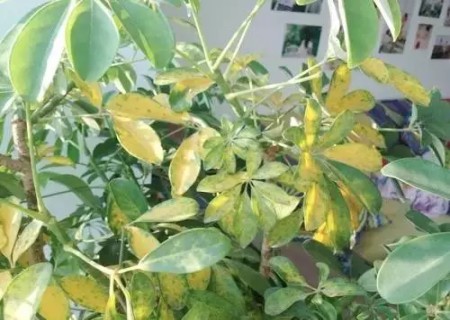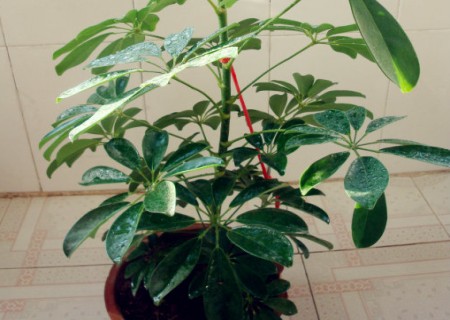What if the leaves of duck feet turn yellow and black and fall off?
Duck foot wood, also known as goose palm wood, is a common foliage plant. Whether it is family green plant or outdoor green plant, duck foot wood is the best choice for green plant conservation. Duck foot wood leaves can not only absorb nicotine released by tobacco. After decorating the house, it can also be used to absorb formaldehyde, which is a good plant to purify indoor air. Although duck foot wood is easy to raise, but once there is a maintenance problem, it is also a headache every minute.

What if the leaves of duck feet turn yellow and black and fall off?
The reason for the yellowing, blackening and shedding of duck foot leaves is mainly due to the long-term placement of dark places, frequent watering, and the indoor temperature is below 15 degrees.
Handling tricks:
1. Duck foot wood likes a semi-dark environment and can be placed in a place with light, especially in winter. The drought-resistant type of duck foot wood is strong, and it should not be watered too frequently (once every 10 days). The cold resistance of duck foot wood is poor, and the plant should be moved back indoors as far as possible in winter to avoid freezing.
2. The main reason why the leaves of duck foot wood turn black is that there is no sunlight for a long time during the growing period, the ventilation condition is not good, and it may be due to too much watering. The main solution is to place the duck foot wood in a well-lit and ventilated place for maintenance, cut off the blackened duck foot leaves, and the blackening of the duck foot leaves will slowly recover.
Of course, there are several situations that cause the leaves of potted duck feet to turn yellow, turn black and fall off: the potted soil is impervious, water watering too many rotten roots, poor ventilation and weak light.
Maintenance suggestions: loosen the basin soil, put it outside for half a year, watering should see dry and wet.
1. Duck foot wood likes a semi-dark environment and should not be placed in a dark place, especially in winter, when insufficient sunshine and frequent watering can easily cause large areas of leaf yellowing and leaf shedding.
2. Duck foot wood has strong drought resistance, and the best watering times is once every 10 days. Watering too frequently can easily cause a large area of leaves to fall off, breed many diseases and insect pests, and appear many greasy insects on the back of the leaves.
3. The cold tolerance of duck foot wood is poor, and the indoor temperature in winter is not lower than 15 degrees, otherwise the whole plant will be frozen and it will be difficult to bring the dead back to life.
4. Duck foot wood must not apply fertilizer indiscriminately, which can easily cause soil hardening in a large area.
Time: 2019-05-31 Click:
- Prev

How to deal with potted duck feet
Ardisia is not only an ornamental plant, it has a certain impact on the purification of household air, it can absorb nicotine and other harmful substances and convert them into their own substances, is a beneficial plant. But recently found that my duck foot wood branches and leaves secrete sticky substances, touch it can stick, and glue almost
- Next

Culture methods and matters needing attention of potted Ivy
Ivy is a kind of popular indoor large potted flowers and trees, especially in the living room, study and living room. it is elegant, simple and with southern flavor. It is a new generation of indoor foliage plant with beautiful shape, regular shape and world famous.
Related
- Fuxing push coffee new agricultural production and marketing class: lack of small-scale processing plants
- Jujube rice field leisure farm deep ploughing Yilan for five years to create a space for organic food and play
- Nongyu Farm-A trial of organic papaya for brave women with advanced technology
- Four points for attention in the prevention and control of diseases and insect pests of edible fungi
- How to add nutrient solution to Edible Fungi
- Is there any good way to control edible fungus mites?
- Open Inoculation Technology of Edible Fungi
- Is there any clever way to use fertilizer for edible fungus in winter?
- What agents are used to kill the pathogens of edible fungi in the mushroom shed?
- Rapid drying of Edible Fungi

